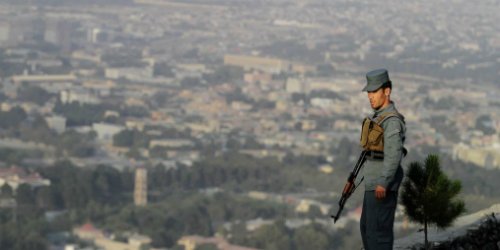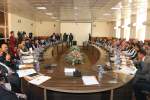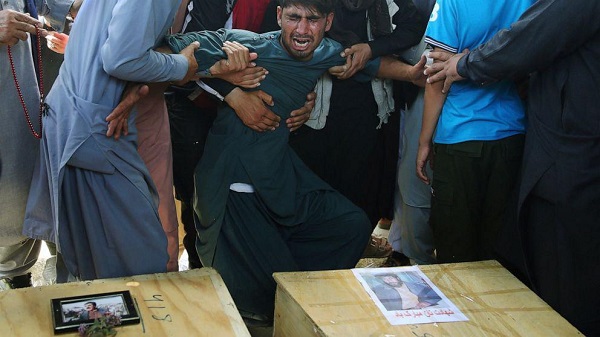The Asia Foundation’s annual survey of the Afghan people shows that more than 60 percent of Afghans remain pessimistic about their country’s future.
Publish dateTuesday 4 December 2018 - 12:06
Story Code : 175256
According to the Asia Foundation, a total of 15,012 face-to-face interviews were conducted with Afghan respondents 18 years of age and older, 50.3% male and 49.7% female, and comprising 80.6% rural and 19.4% urban respondents.
The interviews were conducted across the country from July 6 to 27, 2018, a month following the three-day, Eid-ul-Fitr ceasefire agreement between the government and the Taliban.
The survey shows that this year, the proportion of Afghans who say the country is moving in the right direction is the same as last year (32.8%).
Similarly, there is little difference between the number of Afghans this year who say the country is moving in the wrong direction (61.3%) and last year (61.2%), the survey says.
A small proportion of respondents say they do not know whether the country is moving in the right or the wrong direction, (5.6%, compared to 5.3% in 2017), the survey indicates.
Insecurity is the most frequently cited reason for pessimism about the country’s direction, cited slightly more often this year than last (72.5% vs. 69.5%), followed by concern about the economy (37.6%), which includes the 23.7% of respondents who explicitly refer to unemployment as a reason for their pessimism, the survey says.
The survey shows that a third of pessimistic respondents (33.0%) cite problems with governance; 14.3% cite corruption, a lack of infrastructure or services (9.1%), foreign intervention (6.4%), injustice or human rights issues (4.2%), and a lack of international assistance (2.6%).
Lack of employment opportunities for young Afghans is by far the most frequent response, reported by 74.7% of respondents across Afghanistan, an increase from 71.8% last year, the survey says.
According to the survey, fear for personal safety remains at the same high level as 2017 (70.7% in 2017; 71.1% in 2018) and reflects the public’s continued concern for personal safety since the handover of security responsibilities to the ANDSF (Afghan National Defense and Security Forces) in 2013.
Females (74.7%) are more likely than males (67.4%) to fear for their personal safety, the survey says.
The survey shows that respondents in urban areas (75.3%) are more likely to fear for their personal safety than those in rural areas (69.7%).
Fear of participating in a peaceful demonstration has risen to 73.1%, its highest level in any year of the Survey. More females (77.9%) report fear of participating in a peaceful demonstration than males (68.3%), the survey says.
The survey indicates that confidence that the Afghan National Police is getting better at providing security has declined slightly, from 48.2% in 2017 to 45.8% in 2018, and the percentage of respondents who say the ANP has gotten worse has increased slightly, from 23.2% in 2017 to 25.5% this year.
This year, the Survey asks respondents if any group poses a security threat in their local area. When asked which groups pose a threat to the local area, respondents most frequently name the Taliban (68.2%), followed by criminals/thieves (24.9%), and Daesh/ISIS (16.4%), the survey shows.
The survey shows that rural respondents are more likely to name the Taliban as a security threat (74.2%), while urban respondents are more worried about criminals/thieves (39.5%).
Afghans who believe that reconciliation between the Afghan government and the Taliban is possible have increased slightly by 1.1 percentage points since last year, to 53.5%, the survey says.
According to the survey, the proportion of Afghans who believe that the Taliban are fighting because of the presence of foreign troops has more than doubled, from 6.4% in 2017 to 15.2% in 2018.
The survey shows that similar to last year, the most common sources of news and information for Afghans include friends and family (83.7%), television (68.7%), and radio (62.9%). This year, 16.8% of Afghans report using the Internet as a source of news and information, up from 11.6% last year and 3.3% in 2013, the survey shows.
The survey shows that friends and family remain the most-cited source of news and information, followed by television and radio. Mosques and community shuras remain the 4th and 5th most-cited sources of news and information, followed by the internet.
The survey shows that media are one of the most trusted institutions in Afghanistan (67.0%), after religious leaders (69.3%).
The survey shows that Afghans who use mass media - radio and television – to get their information are more likely to report higher levels of fear for their own or their family’s safety.
The survey shows that obtaining news and information from television or the Internet and watching television are associated with positive perceptions of democracy.
The survey shows that Afghans who rely on the Internet and television to obtain news and information are more supportive of equal educational opportunities for men and women than those who use radio for obtaining news and information.
According to the survey, those who use television (77.1%) and the Internet (76.3%) are the most likely to support women working outside the home.
Based on the survey, election awareness and intention to vote were highest among those who rely on the Internet for news and information (election awareness, 87.8%; intention to vote, 76.9%).
Source : Tolo News
avapress.net/vdcfttdyvw6de0a.r7iw.html
Tags
Top hits












